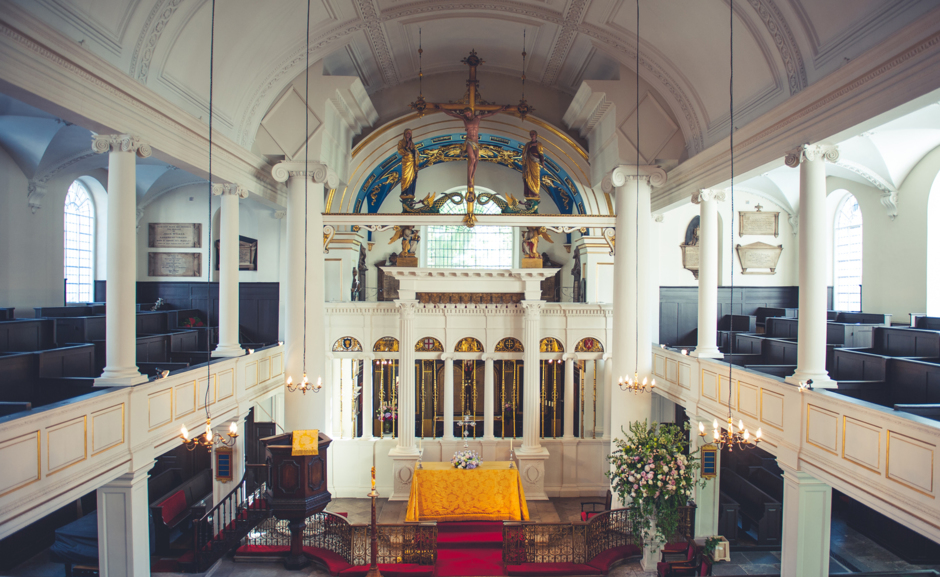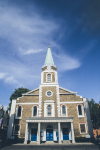
THIS WEEK
SUNDAY 28th July
11am Sung Eucharist -
The Ninth Sunday after Trinity
W.A.Mozart - Missa Brevis in
B flat K275
Gioachino Rossini -
O salutaris Hostia
J.S.Bach - Toccata in D minor
TUESDAY 30th July
1.10pm Mayfair Organ Concert
at St George’s
Matilda Johnston
(Royal Academy of Music)
Max Reger - Second Sonata in D minor op. 60: 1. Improvisation
Camille Saint-Saëns -
Fantasy in E flat major
Johann Sebastian Bach -
Prelude & Fugue in E minor
BWV 548
Louis Vierne - Scherzo & Finale
from the Second Organ Symphony op.20
WEDNESDAY 31st July
7.30am Morning Prayer
(online - www.facebook.com/
SUNDAY 4th August
11am Sung Eucharist - The Tenth Sunday after Trinity
W.A.Mozart - Missa Brevis in
B flat K275
Gioachino Rossini -
O salutaris Hostia
J.S.Bach - Toccata in D minor
CHAPEL OPENING TIMES
The Chapel is usually open to visitors Monday - Friday 8am to 3pm.
The Chapel is also open on
Saturdays for Occasional Offices, and
Sundays for the 11am Sung Eucharist.
ACCESSIBILITY
Step-free access to the Chapel is via a ramp through the main entrance. Please arrange in advance by contacting the Chapel office.
Audability: The Chapel's soundsystem is suitably fitted with
a loop system for pews directly
beneath the south gallery.
William Drake Organ
The organ in Grosvenor Chapel was built by Abraham Jordan and installed in 1732. It had Great and short compass Swell divisions and no pedals. It stood in an upper gallery at the west end, a position it occupied until 1908. It was altered twice in the 19th c. by Bishop, and rebuilt in 1908 by Ingram. In 1930 J.W.Walker and Sons built a new two manual organ incorporating much second-hand pipework both from the old instrument and from elsewhere. The case was widened, and the organ had 21 stops, electropneumatic action and a stop key console.
This instrument was replaced in 1991 by William Drake of Buckfastleigh, Devon, who built a new organ in a broadly 18th c. English style. The Great has the traditional long compass and all pipework is new except for the treble of the Swell Stopped Diapason. The original Jordan front pipes survive, but were not used in 1991 as they are not at 'modern' pitch. The organ is tuned to an unequal temperament and has mechanical action for keys, pedals and stops. The console was modelled on surviving 18th c examples and the pedalboard is flat and straight. Soundboards are of traditional construction with no modern materials, and the action is unbushed. The case was remade and restored by William Drake.
The scaling and treatment of the diapason stops is based on the surviving front pipes, and the Great Stopt and Flute are modelled on ranks in the Seede organ at Lulworth Castle. The Great Cornet is a copy of that in the England organ at Blandford Forum in Dorset, and the reeds are based on the early 19th c. William Allen stops at Everingham in Yorkshire.
The organ was inaugurated by Gustav Leonhardt in May 1991.
Between February and April 2017 the organ was cleaned and overhauled by Drake Organs.
| Great GG/AA - f''' 58 notes |
Swell C - f''' 54 notes |
|||
| Open Diapason | 8 | Open Diapason | 8 | |
| Stopt Diapason | 8 | Stopt Diapason | 8 | |
| Principal | 4 | Principal | 4 | |
| Flute | 4 | Fifteenth | 2 | |
| Twelfth | 2 2/3 | Mixture | III | |
| Fifteenth | 2 | Cornet Treble | III | |
| Furniture | III | Cornet Bass | III | |
| Sesquialtera | III-IV | Trumpet | 8 | |
| Cornet | V from middle c | Hautboy | 8 | |
| Trumpet Treble | 8 | Tremulant | ||
| Trumpet Bass | 8 | |||
| Pedal C-f | 30 notes | |||
| Stopt Diapason | 16 | Swell to Great | ||
| Principal | 8 | Swell to Pedal | ||
| Trumpet | 16 | Great to Pedal | ||
| Three couplers | ||||
| Tremulant | ||||
| Grosvenor Termperament | ||||

